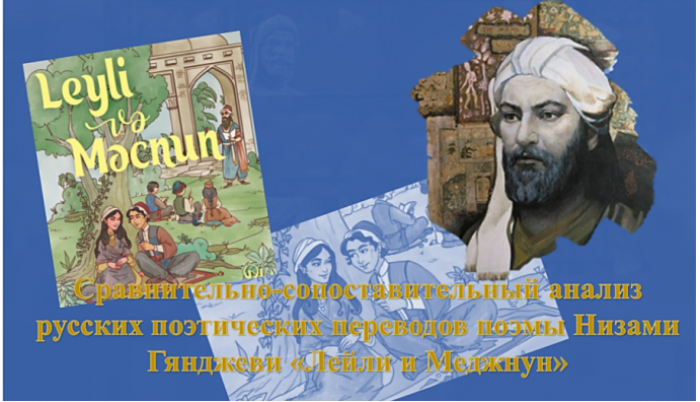
In 1188, on the basis of an Arabic legend about the unhappy love of the young poet Keyes for the beautiful Leyla Nizami, Ganjavi wrote a poem in which he described the drama that had played out among the Bedouin nomads.
A young man and a girl from two Arab tribes - Case and Leyli - have been in love with each other since school. As he grows older, the feeling of being in love with Case intensifies so much that he turns into a madman - "Majnun". Separated from his beloved, he runs away into the desert, moves away from the world of people and finds shelter in the society of animals. Upon learning of Layla's death, Majnun comes to her grave and dies.
Having written this poem, Nizami sang love, which boldly challenged the ancient stubborn foundations of society. Subsequently, it was on the poem "Layli and Majnun" that the largest number of tezkir - imitations and answers - was written. “Love of Majnun in the eyes of Nizami is the highest rise of the human spirit, equivalent to divine grace” [1,31].
The poem is built in the form of small chapters. The story is told in chronological order. The poet skillfully uses a rich arsenal of pictorial means of Eastern poetry - original poetic comparisons, epithets, metaphors, unexpected hyperbole. All these figurative means of artistic poetic expression serve to comprehensively reveal the images of the heroes of the poem.
The poetic language of the poem is distinguished by unprecedented brightness and expressiveness. Acad. E.E. Bertels wrote that Nizami, while working on his works, consistently pursued "the principle that requires maximum artistic expressiveness, the use of the maximum possible decorations in each individual line without prejudice to the train of thought" [2,130]. And in this he saw the reason for the difficulty of Nizami's language, recognized by Orientalists all over the world.
Prof. R. Aliyev emphasized that the hyperbolas used by Nizami were always harmoniously woven into the fabric of a work of art. And the metaphors, the art of using which the poet was fluent in, he often created on the basis of the most ordinary objects and phenomena, poetizing and inspiring them [4,22].
The poem "Layli and Majnun" is written in the form of mesnevi in the size of hazaj. As stated by prof. R. Aliev, “this meter is very smooth and has great rhythmic diversity. It can be read both at an accelerated and at a slow pace, depending on the nature and logical development of the narrative" [4,23].
For the first time excerpts from the poem "Leyli and Majnun" were translated into Russian by A. Globa and published in 1935 in Moscow by the publishing houses "Academia".
Andrei Pavlovich Globa (1888-1964) was a rather famous Soviet writer, poet and playwright. He wrote comedies, tragedies, farces and melodramas. He also acted as a translator. A. Globa translated the poetry of G. Abashidze, I.-V. Goethe, G. Heine, D. Gulia, A. Mickiewich, I. Franko W. Shakespeare and others.
The poem was translated in fragments, the verses interspersed with brief prose summaries of missing passages. Not having this translation at present, we can only refer to the opinion found on the Internet that “according to the critics of that time, A. Globa’s translation, although distinguished by clarity of form, was devoid of exact correspondence to the analogue” [5].
At the end of the 30s. in connection with the preparations in the USSR for the anniversary of Nizami, magazines often published fragments of translations from Nizami's works, including from the poem "Leyli and Majnun". Their authors are the poet P. Antokolsky and T. Forsh. Already after the war, in 1948, the publishing house "Molodaya Gvardiya" and in 1957, the publishing house "Fiction" published a translation of P. Antokolsky as a separate book.
The next translation of the poem into Russian was published in 1982 by the Yazychi publishing house in Baku. The translation was made by the poet A. Starostin. And in 1986, the Khudozhestvennaya Literatura publishing house published a poetic translation of the poem by the famous Russian poetess T. Streshneva.
